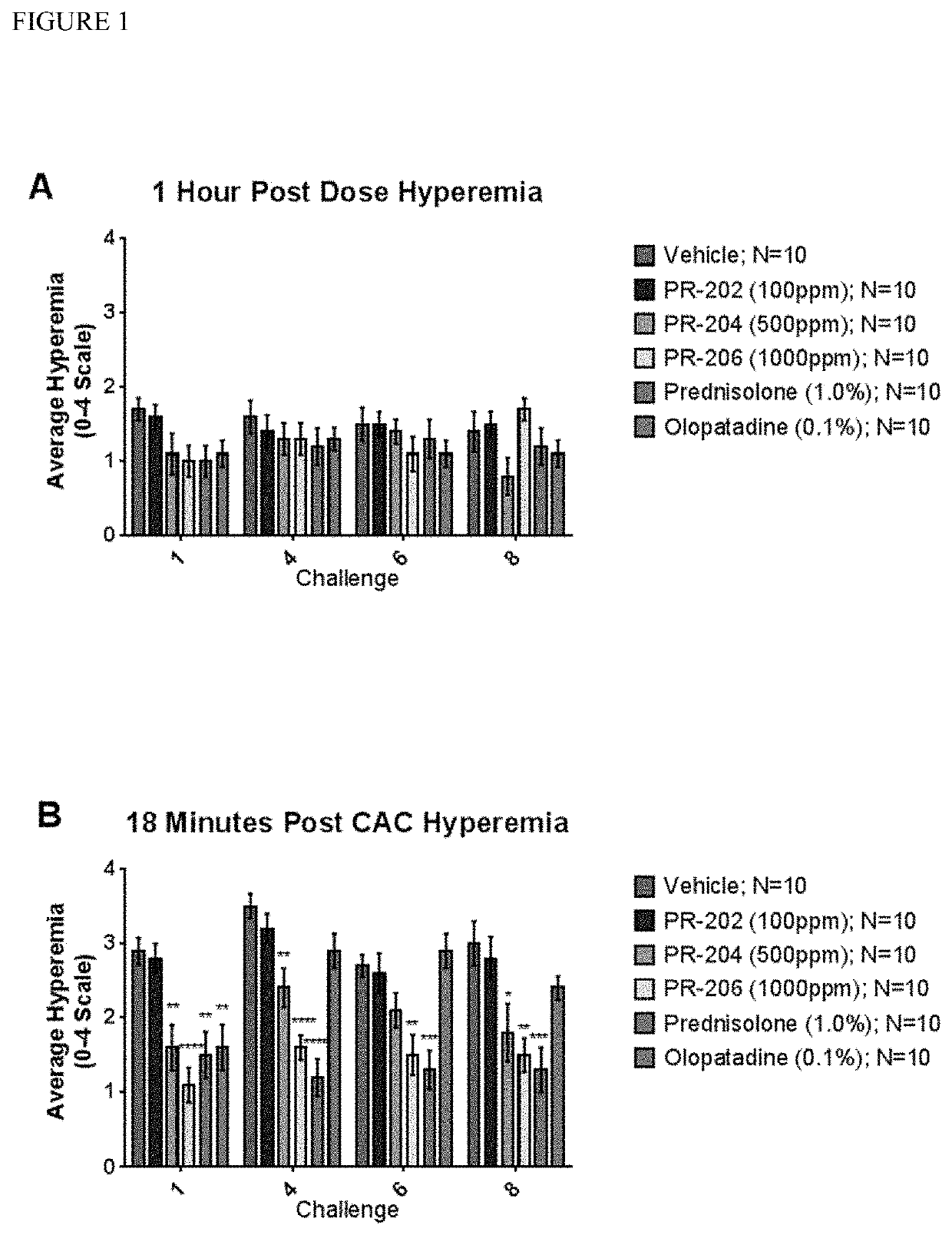Hypochlorous acid formulations and methods for treating skin conditions
a technology of hypochlorous acid and formulation, applied in the field of hypochlorous acid, can solve problems such as considerable suffering and morbidity, and achieve the effect of stimulating healing processes and/or healthy skin microbiom
- Summary
- Abstract
- Description
- Claims
- Application Information
AI Technical Summary
Benefits of technology
Problems solved by technology
Method used
Image
Examples
example 1
Formulations
[0070]A hydrogel formulation containing a stabilized hypochlorous acid solution was developed. Bicarbonate or dissolved inorganic carbon has only a minimal effect on the ionic strength or electroconductivity of the solution. Thus, in addition to stabilizing a HOCl solution in the pH range of about 4 to about 7.5 (e.g. about 6), bicarbonate or carbonate do not affect the ionic strength at the targeted pH, making it possible to use hypochlorous acid with more than 200 ppm of available free chlorine as the dispersing media in a gel formulation, especially where low ionic strength is important.
[0071]A low ionic strength hypochlorous acid solution (conductivity ≤1 mS / cm (i.e., millisiemens per centimeter)), AFC=300 ppm, pH 5.3 was used for a hydrogel formulation containing 3% sodium magnesium fluorosilicate. More than 4% sodium magnesium fluorosilicate was required for the production of a hydrogel of equal viscosity made out of 8 mS / cm of HOCl with equal pH and AFC content. A...
example 2
n of Itch Reduction
[0076]In an investigator—blinded, randomized study, hypochlorous acid composition in the form of gel was evaluated for reduction of inflammation, by means of itching reduction. 30 subjects aged 12 to 75 years old with mild to moderate atopic dermatitis participated over a period of 3 days. The patients, 20 subjects, treated with hypochlorous acid composition, ≤450 ppm AFC, were compared to 10 untreated control subjects. The evaluation included an assessment of tolerability by investigator and participant.
[0077]Overall irritation, stinging, burning and itching on a 5-point ordinal scale were evaluated on day 1 (baseline visit), day 2 and day 3. Investigator assessment was calculated as the mean of 5-point scale for erythema, desquamation, lichenification, overall irritation, and excoriation. Subject queries were based on stinging, burning and itching at day 1, day 2, and day 3. Incidence of all adverse events, including serious adverse events, local skin reaction, ...
example 3
y Evaluation of Inflammation Reduction
[0081]An evaluation of inflammation reduction by means of itching reduction and skin quality improvement was conducted on a 4 year old male treated with HOCl gel. The patient had eczema of the palmar aspect of the patient's hands and plantar aspect of the feet. The patient experienced severe itching, severe erythema (beet redness) to eschar formation, cracking, yellow plaques / hardening of skin and peeling of the skin over the course of two months. As a first line of therapy, the patient was prescribed Hydrocortisone Valerate Ointment USP, 0.2%, a topical corticosteroid twice daily to the affected areas. After 4 weeks of treatment twice daily with corticosteroids, the patient had no resolution of symptoms.
[0082]The patient was taken off the topical corticosteroid and instead treated with hypochlorous acid composition ≤450 ppm AFC, twice daily to the affected areas.
[0083]Treatment with HOCl composition effectively reduced symptoms in a subject wit...
PUM
 Login to View More
Login to View More Abstract
Description
Claims
Application Information
 Login to View More
Login to View More - R&D
- Intellectual Property
- Life Sciences
- Materials
- Tech Scout
- Unparalleled Data Quality
- Higher Quality Content
- 60% Fewer Hallucinations
Browse by: Latest US Patents, China's latest patents, Technical Efficacy Thesaurus, Application Domain, Technology Topic, Popular Technical Reports.
© 2025 PatSnap. All rights reserved.Legal|Privacy policy|Modern Slavery Act Transparency Statement|Sitemap|About US| Contact US: help@patsnap.com

